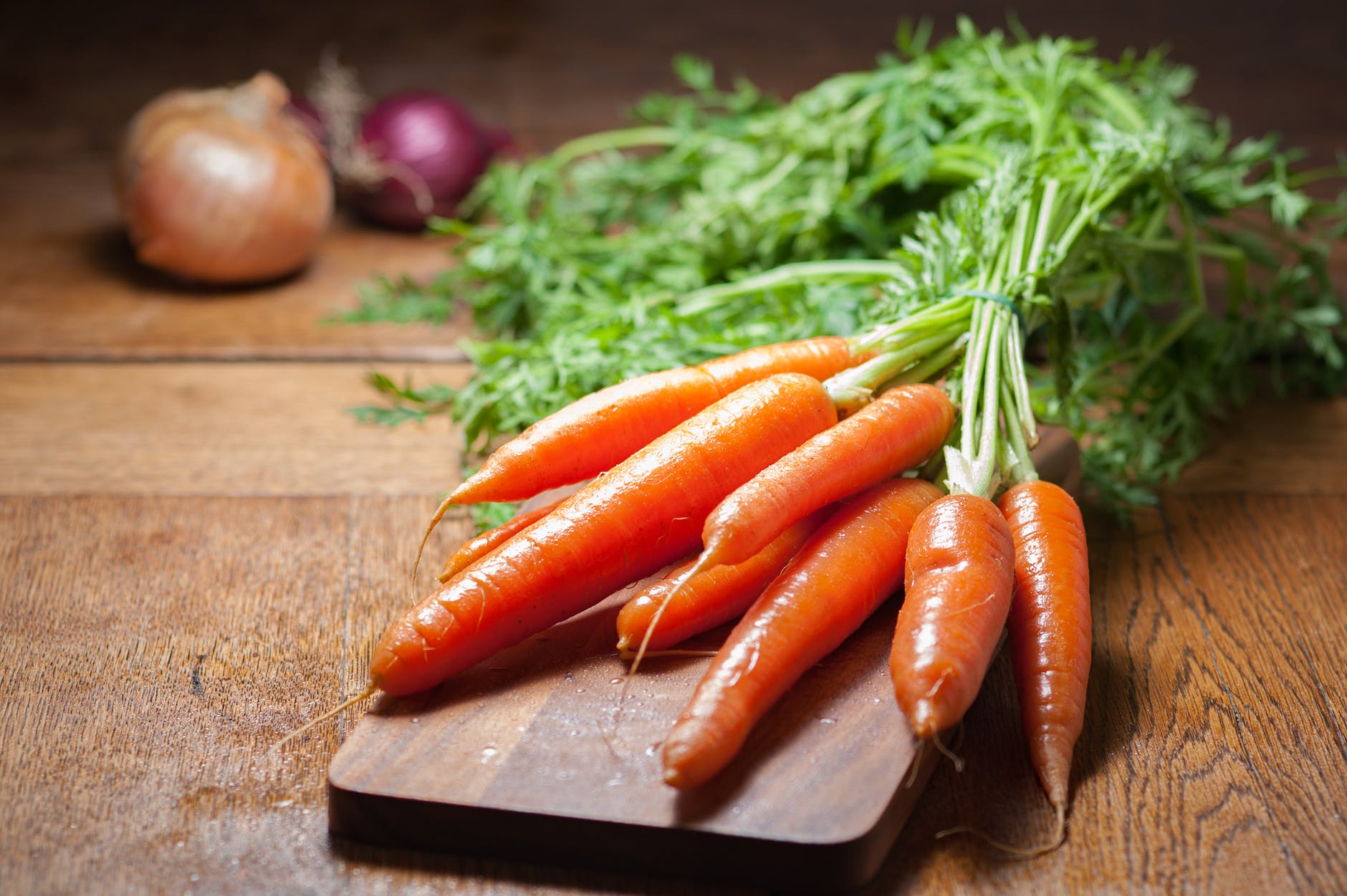A Comprehensive Guide to Growing Carrots on Your Allotment
Growing carrots on an allotment can be a rewarding experience, but it requires careful planning and preparation. Here is a detailed guide to help you grow the best carrots possible.
- Choose the right variety:
There are many different varieties of carrots available, each with their own unique characteristics and requirements. Some popular varieties for allotment growers include Nantes, Chantenay, Danvers, and Amsterdam. Each of these varieties has different features, such as sweetness, size, and shape. When selecting your carrot variety, consider your climate and soil type, as well as your personal preferences. - Prepare the soil:
Carrots prefer well-drained soil that is free of stones and other debris. Before planting, remove any weeds and rocks from the area and loosen the soil to a depth of at least 30cm. It is important to have soil that is free of large clumps and is well aerated. Carrots also prefer a slightly acidic soil with a pH between 5.5 and 6.5. Test your soil to see if it needs any amendments, such as lime or compost. - Planting:
Carrot seeds are small and require careful planting. Plant your carrot seeds in early to mid-spring, once the soil has warmed up to at least 7°C. Sow the seeds thinly, about 2-3cm apart, in rows that are 30cm apart. Make sure that the soil is fine and free of any large clumps, so that the seeds can easily make contact with the soil. Cover the seeds with a fine layer of soil and water gently. Carrots can also be planted in the late summer or early autumn for a late season crop. - Watering:
Carrots need consistent moisture to grow well, but it is important not to overwater them, as this can cause the seeds to rot. Water regularly, especially during dry spells, and make sure the soil is moist but not waterlogged. It is best to water deeply and less frequently, rather than shallowly and frequently. Watering in the early morning or late afternoon will help to prevent evaporation and ensure that the plants can absorb the water. - Thinning:
Once your carrot seedlings have germinated and grown to about 5cm tall, thin them out to a spacing of 5-7cm apart. This will allow each carrot to develop fully and prevent overcrowding. Thinning can be done by carefully pulling out the smaller plants or by using scissors to snip them off at the soil level. Thinning can be time-consuming but is necessary for healthy growth and development of the remaining plants. - Weeding:
Keep your carrot patch free of weeds, as they can compete with the carrots for nutrients and water. Hand-weed regularly and avoid using weedkillers, as they can harm beneficial insects and soil microorganisms. Weeds can be removed by using a hoe or by hand. It is important to remove weeds before they become established, as they can quickly spread and become difficult to control. - Fertilizing:
Carrots do not require a lot of fertilizer, but it is important to provide them with some nutrients to grow well. Apply a balanced fertilizer or organic matter about a month after planting, and again about 6 weeks later. Compost, well-rotted manure, or a balanced commercial fertilizer can be applied to the soil. It is important not to over-fertilize, as this can lead to poor growth and root development. - Pest and disease control:
Carrots are susceptible to a range of pests and diseases, including carrot fly, root knot nematodes, and fungal infections. To prevent carrot fly, cover your plants with fine mesh netting and avoid planting near celery, parsley, or other plants that attract carrot flies. Root knot nematodes can be prevented by rotating crops and planting resistant varieties. Fungal infections can be prevented by avoiding overhead watering and by providing good air circulation around the plants. If you do encounter pests or diseases, consult a gardening guide or talk to an expert at your local garden center for advice on the best treatment options. - Harvesting:
Carrots can be harvested when they have reached maturity, which is usually 70-80 days after planting. Mature carrots will be about 2.5-5cm in diameter and 15-30cm long, depending on the variety. To harvest, gently pull the carrots out of the ground by grasping the tops and wiggling them back and forth until they come loose. Be careful not to break the roots, as this can cause them to rot in storage. Carrots can be stored in a cool, dry place for several weeks. - Enjoying your harvest:
Carrots are a versatile vegetable that can be enjoyed in a variety of dishes. They can be eaten raw or cooked, and are a great source of vitamins, minerals, and fiber. Try adding grated carrots to salads or using them in soups, stews, or stir-fries. Carrots can also be roasted, steamed, or boiled as a side dish. With a little planning and care, you can enjoy a bountiful harvest of delicious, nutritious carrots from your allotment.

Health Benefits of Carrots:
Carrots are not only a versatile and delicious vegetable, but they also offer a range of health benefits. Here are a few reasons to include carrots in your diet:
- Promotes Eye Health: Carrots are rich in beta-carotene, which can be converted into vitamin A in the body. Vitamin A is essential for eye health and may help prevent age-related macular degeneration.
- Boosts Immune System: Carrots are high in antioxidants, which can help boost the immune system and protect against disease.
- May Improve Digestive Health: The fiber in carrots can help promote digestive health and regularity.
Meal Ideas:
Carrots can be used in a variety of dishes, from salads to soups to snacks. Here are a few ideas for incorporating carrots into your meals:
- Carrot and Ginger Soup: Saute chopped carrots, onions, and garlic in a pot, then add vegetable broth and grated ginger. Simmer until the vegetables are tender, then blend until smooth. Serve with a dollop of sour cream or yogurt.
- Roasted Carrots: Cut carrots into sticks and toss with olive oil, salt, and pepper. Roast in the oven until tender and caramelized. Serve as a side dish or snack.
- Carrot and Lentil Soup: Saute chopped carrots, onions, and garlic in a pot, then add vegetable broth and lentils. Simmer until the lentils are cooked through and the vegetables are tender. Add a squeeze of lemon juice and some fresh herbs before serving.
- Carrot and Ginger Stir-Fry: Stir-fry sliced carrots, bell peppers, and snap peas in a wok or skillet. Add grated ginger and soy sauce, and cook until the vegetables are tender-crisp. Serve with rice or noodles.
Growing carrots on your allotment can be a fun and rewarding experience. With a few simple steps, you can enjoy a bountiful harvest of fresh and nutritious carrots right from your own plot.
To ensure success, it’s important to choose the right variety of carrot for your area, provide proper soil conditions, and practice regular care and maintenance. This can include thinning seedlings, watering regularly, and protecting against pests and diseases.
Once you have a healthy crop of carrots, there are many delicious ways to enjoy them in meals and snacks. From roasted carrots to carrot cake oatmeal, this versatile vegetable can be used in a variety of dishes.
Growing carrots on your allotment is a great way to incorporate fresh, healthy produce into your diet and enjoy the rewards of your hard work.




